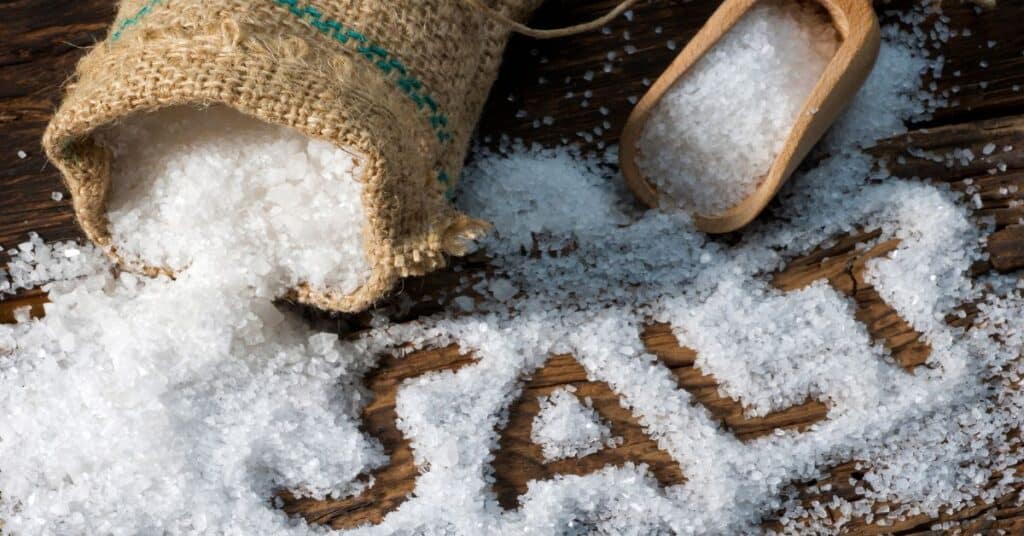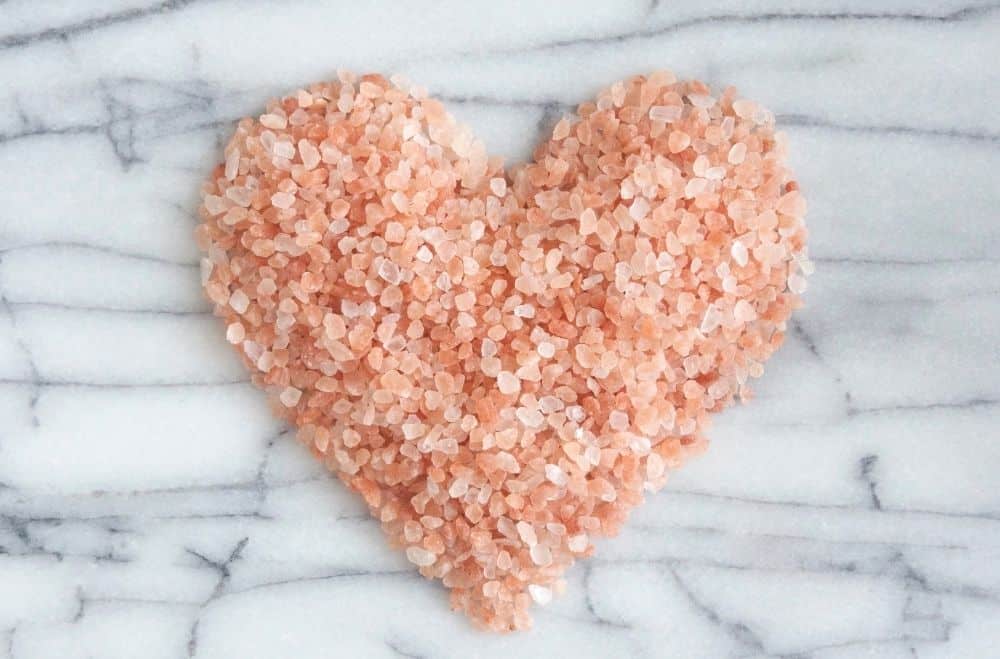
The two most common salts are iodized and regular salt. But what is the difference between these salts that look pretty much identical? Keep reading to uncover what is the difference between iodized salt and regular salt.
Iodized Salt Vs. Regular Salt

Chemical Composition
Iodized salt and regular salt differ mainly in their iodine content. Regular salt, or sodium chloride, comes from various sources like sea, rock, or lake salt deposits. It is made up of sodium and chloride with a trace amount of other minerals like calcium, magnesium, and potassium.
Iodized salt is specifically fortified with iodine. This addition is typically done in the form of sodium iodide or potassium iodide.
Sea salt and Celtic sea salt are types of regular salt with varying mineral compositions due to their source. Black salt, a type of rock salt, contains sulfur compounds that give it a unique taste and color.
Taste and Texture
The primary taste difference between regular salt and iodized salt lies in the presence of iodine. Regular salt has a pure, salty flavor, while iodized may have a slightly metallic aftertaste due to the added iodine. In most culinary applications, this taste difference may not be significant, but some prefer using non-iodized salts for recipes that call for a delicate flavor balance or larger quantities of salt.
When it comes to texture, regular salt commonly comes in various grain sizes, such as coarse, fine, or flaky. Sea salt and Himalayan salt, in particular, are known for their larger crystals which can provide a pleasant crunch and appearance when used as a finishing salt. Iodized salt, on the other hand, typically has a consistent and fine-grained texture, ideal for even distribution in recipes.
The Purpose of Iodine
Iodine is an essential mineral required for the proper functioning of the thyroid gland and the production of thyroid hormones. These hormones play a crucial role in maintaining metabolism, growth, and overall energy levels.
Iodized salt was introduced as a public health measure to combat iodine deficiency disorders, which can lead to conditions like goiter, cretinism, and neurological problems. In areas where iodine is naturally scarce in the soil and diet, the addition of iodine to table salt has significantly reduced these health issues.
Culinary Uses and Preferences
Cooking and Recipes
When it comes to cooking food and recipes, the choice between iodized salt and regular table salt may depend on taste and texture preferences. Iodized salt has a slightly metallic taste due to the added iodine, which is typically undetectable in most recipes, especially when mixed with other ingredients. Regular salt, without added iodine, imparts a cleaner, purer taste to dishes. Both types of salt have similar granular sizes and dissolve at similar rates, making them interchangeable for most cooking purposes.
Kosher Salt and Sea Salt
Sea salt and Kosher salt are both types of regular salt that are known for their unique flavors and textures. Kosher salt has larger, coarser granules, which provide a distinct crunch and a more robust taste. This makes it a popular choice for seasoning meats and seafood, as well as rimming cocktail glasses. Sea salt, derived from evaporated seawater, contains various minerals that add subtle nuances to its flavor profile. Sea salt is often used as a finishing salt to enhance the natural flavors of a dish.
Fleur De Sel and Other Varieties

Fleur de sel is a type of hand-harvested sea salt featuring fine, delicate crystals. These unique granules provide a gentle crunch and distinct taste, making them ideal for enhancing the flavors of vegetables, seafood, and other delicate dishes.
There is a plethora of artisanal salt varieties available, each with its unique flavor and texture profiles and colors, including black and pink salt. Experimenting with different salts in a recipe can provide a depth of flavor and unexpected twists. While iodized salt remains a staple ingredient for its nutritional benefits, the discovery of new varieties can elevate the flavors and textures of culinary creations.

